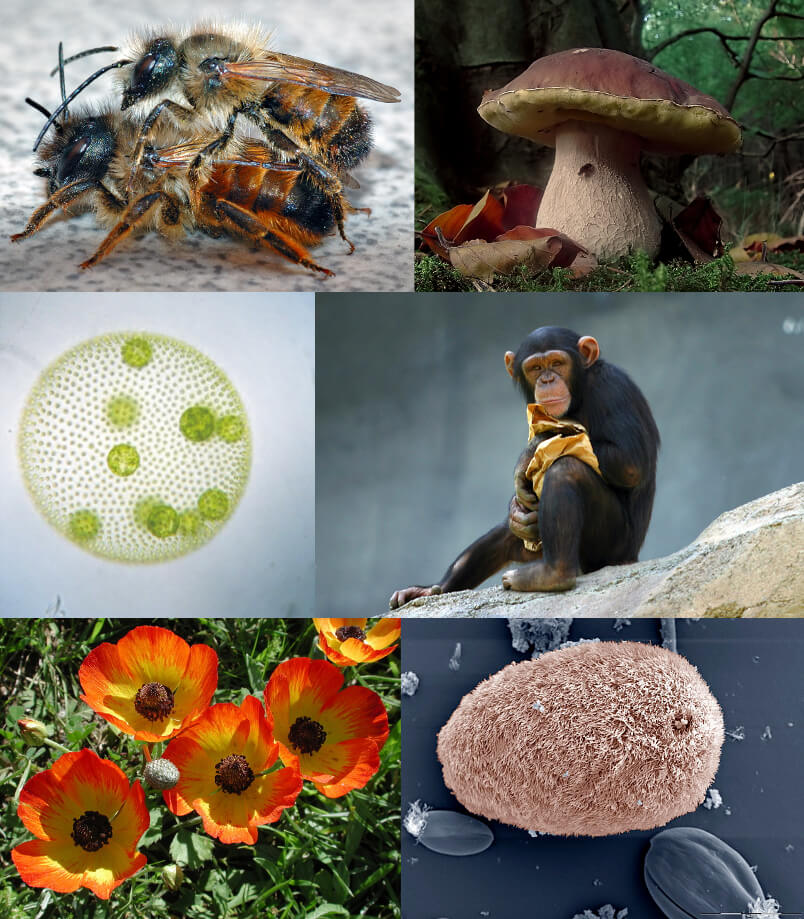
4th November 2018 The Earth BioGenome Project is launched The Earth BioGenome Project – a 10-year effort to sequence the genomes of all 1.5 million known animal, plant, protozoan and fungal species (eukaryotes) – was officially launched this week.
The Human Genome Project, conducted from 1990 to 2003, was the largest and most expensive single project in the history of biology. It mapped the 20,000+ genes of the human genome from both a physical and functional standpoint, creating a wealth of scientific data and $1 trillion in economic returns. In the years since that landmark achievement, genome sequencing costs have plummeted – at a rate even faster than Moore's Law – and whole genomes can today be sequenced accurately and within a matter of hours for under $1,000. The process is now so quick and convenient that it has even been done using a handheld device on the International Space Station. It has entered mainstream public use with companies such as 23andMe and AncestryDNA. This week, scientists announced the most ambitious effort of its kind ever attempted, as the Earth BioGenome Project (EBP) was launched. Whereas the earlier Human Genome Project was restricted to a single species – humans – the EBP will study 1.5 million forms of life. It will aim to sequence, catalogue and categorise the genomes of all of Earth's eukaryotic biodiversity over a period of ten years. Eukaryotic species (animal, plant, protozoa and fungi) are organisms whose cells have a nucleus enclosed within membranes, unlike prokaryotes, which are unicellular organisms that lack a membrane-bound nucleus, mitochondria or any other membrane-bound organelles (Bacteria and Archaea). Currently, fewer than 3,500 – or about 0.2% – of all known eukaryotic species have had their genome sequenced, with less than 100 at reference quality. Sequencing all known eukaryotic genomes could revolutionise our understanding of biology and evolution, as well as bolstering efforts to conserve and restore the Earth's biodiversity. The total estimated cost of the EBP is $4.7 billion. Adjusted for inflation, the Human Genome Project today would cost $5 billion, which again underscores the exponential improvement in sequencing costs.
On Thursday this week, key scientific partners and funders from around the world gathered in London to discuss their progress in organising and funding. According to the researchers involved, the EBP will ultimately "create a new foundation for biology to drive solutions for preserving biodiversity and sustaining human societies." In their Memorandum of Understanding, the project's participants have agreed that data will be stored in public domain databases and access will be open to all for research purposes. The Wellcome Sanger Institute – one of the world's leading genome centres – will lead the UK effort, with plans to sequence all 66,000 eukaryotic species across the British Isles, in a new research project called the Darwin Tree of Life Project. Its UK partners will include the Natural History Museum in London, the Royal Botanic Gardens of Kew, Earlham Institute, European Bioinformatics Institute and world-leading genomics facility at the University of Edinburgh. The EBP will coordinate and combine hundreds of additional projects from countries around the world. "When the Human Genome Project began 25 years ago, we could not imagine how the DNA sequence produced back then would transform research into human health and disease today," said Sir Jim Smith, Director of Science at Wellcome, a biomedical research charity in London. "Embarking on a mission to sequence all life on Earth is no different. From nature, we shall gain insights into how to develop new treatments for infectious diseases, identify drugs to slow aging, generate new approaches to feeding the world or create new bio-materials." "Globally, more than half of the vertebrate population has been lost in the past 40 years, and 23,000 species face the threat of extinction in the near future," said Professor Sir Mike Stratton, Director of the Wellcome Sanger Institute and Chief Executive Officer of its Genome Campus. "Using the biological insights we will get from the genomes of all eukaryotic species, we can look to our responsibilities as custodians of life on this planet, tending life on Earth in a more informed manner using those genomes, at a time when nature is under considerable pressure, not least from us." The EBP has made substantial progress in the last year, leading up to this official launch. The initial stages (see video below) had served as an organising glue for existing large-scale genome projects and their partnering institutions. Since then, a total of 17 institutions from countries including Australia, Brazil, China, Denmark, Germany, the UK and USA have signed the Memorandum of Understanding, committing each institution to work together towards the common goals of the project. Many additional partner institutions, organisations and communities are expected to join as the project progresses between now and 2028.
Comments »
If you enjoyed this article, please consider sharing it:
|








